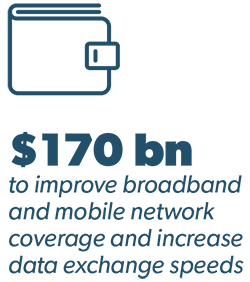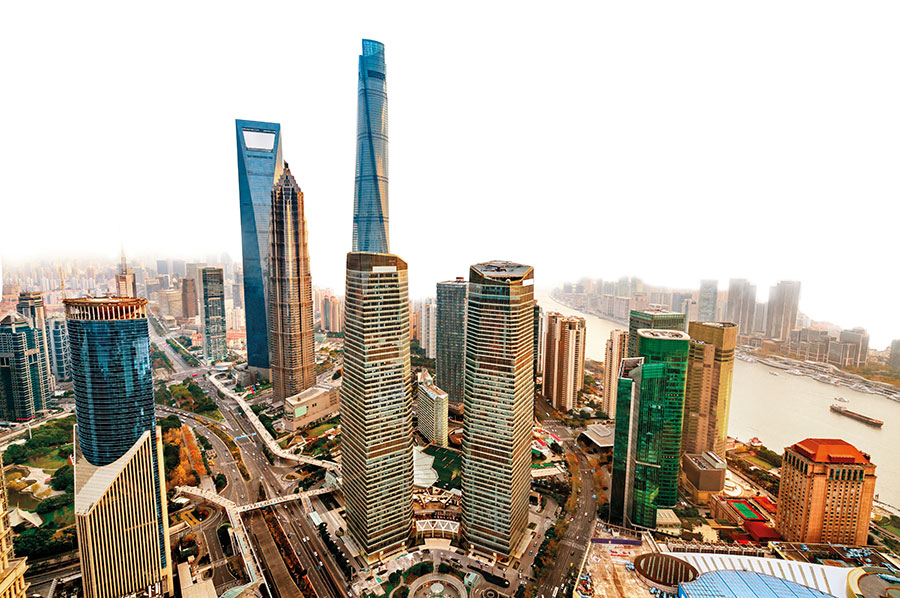Digital Silk Road
forging ahead
Tracking The Future
Digital Silk Road forging ahead

In 2013 President Xi Jinping unveiled plans for the ‘One Belt, One Road’ project, two vast infrastructure and trade networks, intended to stimulate China’s economic growth: the New Silk Road (also called the Silk Road Economic Belt) and the Maritime Silk Road. In issue 2-2017, Insight covered the $21.1 trillion project. Now, we’re presenting an update.
In 2017, the OBOR initiative became integrated into China’s constitution. In May of that year, the first ever Belt and Road Forum was heldin Beijing, attended by 1200 international delegates, 28 heads of state, 100 government officials and dozens of international organizations. A variety of deals were closed.
2017 also saw several new OBOR projects. A robot manufacturing and export hub was founded in the city of Horgos, a duty-free zone on the borderbetween China and Kazakhstan, attracting increasing businesses throughout the year. China invested over $20 billion in foreign seaports – twice as much the year before. New international rail lines to Europe, Iran, Central Asia and other destinations were initiated and plans for a‘hyperloop’- type connection between the port of Zarubino, Russia, and China’s Hunchun logistics zone were announced. At present, China is operating 77 sea terminals worldwide.
Cross-border connections
An important part of OBOR is improving international connectivity through constructing cross-border optical cables and other communications trunk-line networks. The aim is to support everything from telecommunications to e-commerce and smart city functionality.
“Beijing will lead the construction of the digital era equivalent of the World Trade Organisation through its One Belt, One Roadinitiative,” stated Wang Huiyao, founder and president of the Centre for China and Globalisation at the International Cooperation along the Digital Silk Road Forum, held during the 4th World Internet Conference held in Wuzhen in December. Western technology firms were well represented during the event, with attendees including Apple CEO Tim Cook and Google CEO Sundar Pichai.
China’s National Development and Reform Commission andMinistry of Industry and Information Technology (MIIT) have $170 billion in Internet projects underway, to improve broadband and mobile network coverage, increasing data exchange speeds between East Asia and Europe. Submarine cablesaim to cut data packet travel times between Tokyo and London by 30 percent. 34 cross-border cables and international sea cables connecting Asia, Africa and Europe are planned.
Presently, China is focusing on developing the interconnected ‘Digital Silk Road’ together with Saudi Arabia, Egypt, Turkey, Thailand, Laos, Serbia, and the United Arab Emirates. Under the ‘Internet Plus’ initiative the Chinese government and business community are also investing heavily in providing internet access to 90 percent of China’s less economically strong regions.

INNOVATION IS THE GATEWAY TO CHINA’S MARKET
Matteo Bavaresco, CEO of Prysmian China, illustrates the approach of the Group to one of the world’s fastest growing markets. Prysmian Group is widely present in the energy and telecom arenas, both in mainland China and its neighbouring countries.
“The key to succeed in the Chinese market is to boost innovation.” With these words, Matteo Bavaresco, CEO of Prysmian China, sums up the approach of the Group to one of the world’s fastest growing markets. Prysmian Group is widely present in terms of its Energy and Telecom businesses in China and its surrounding markets, especially due to our Chinese branch’s large investments, with its stronghold represented by the Jiangsu plant.
The facility is located in Yixing, a city with more than 1.2 million inhabitants near Shanghai. Bavaresco stressed that Jiangsu “is very important for the Group and is an example of the results that investments in innovation can bring”. It represents “the absolute primacy of Prysmian in China in terms of dimension and quality for cable production and MV, HV and VHV power distribution”.
The manufacturing and logistics facilities consist of an area of more than 190,000 sqm and 5 production lines with a capacity of over 20,000 tonnes per year. The plant is also essential for Prysmian to supply new foreign markets. Bavaresco explains that “Prysmian Group aims to become a major player in the 21st-century Silk Road, offering innovative systems both for energy and telecom projects in the public and private sectors”.
The CEO adds that “nowadays, we are involved in investments in the technological infrastructure development sector, that is to say transport, bridges, tunnels, hospitals and schools both in the energy and telecom sectors with important data centres.
TECH GIANTS AS CUSTOMERS
The giant ecommerce company Alibaba is one of our most important customers in multimedia solutions, along with Huawei”. Multimedia is a growing sector for Prysmian China. The Group employs around 1,500 people working in 7 manufacturing plants, and is active in the HV and MV sectors, supplying municipalities and grids.
Bavaresco adds that Prysmian is also present in the industrial sector, in the Original Equipment Manufacturing business and in Cables, Rolling Stock, Mining, Crane, and Cruises. In this last business area, Prysmian recently signed cooperation agreements with China Shipbuilding and Italy’s Fincantieri. Abroad, Prysmian’s Chinese branch is developing important mechanisms of financing for the One Belt, One Road initiative that offers the Group the opportunity to expand production volumes and increase profitability. In fact, explains Bavaresco, “the Chinese government is pushing for the One Belt, One Road policy”, the project stemming from hundreds of years of commercial trading between China, the Middle East and Western countries.
ICT IS THE HIGHEST PRIORITY
China initiated the Silk Road Economic Belt and the 21st-Century Maritime Silk Road to stimulate the exchange of capital, goods and services between Asia and the rest of the world.
ICT is the ‘highest priority’ and lists five areas in which progress is to be made:
- Strengthen connectivity and advance integration of people
- Accelerate digital transformation and advance application of digital technology
- Build innovation chain and make progress in fostering innovation capacity
- Strengthen policy alignment and make progress in digital economy
- Enhance exchange and cooperation and make progress in governance system.

